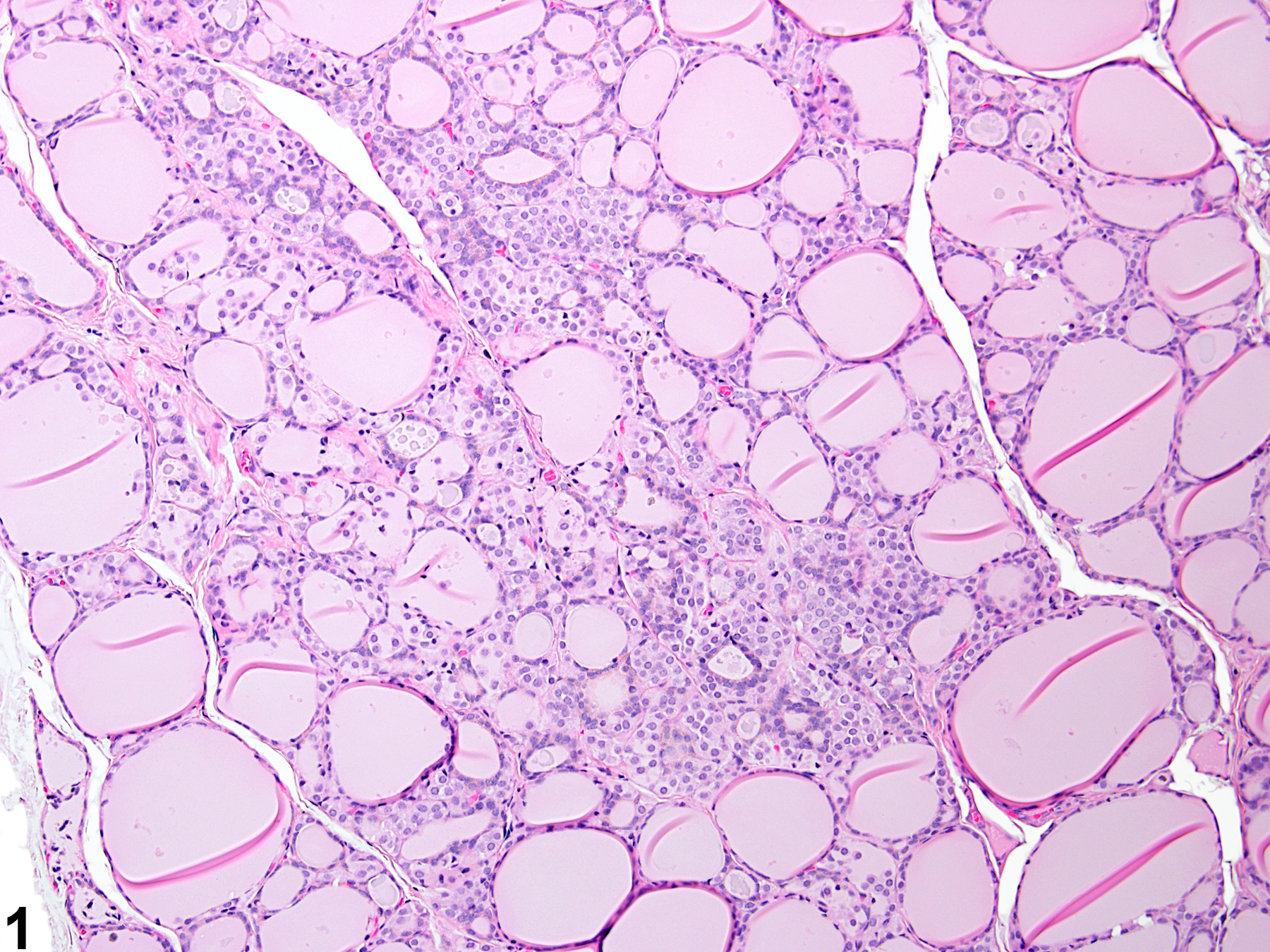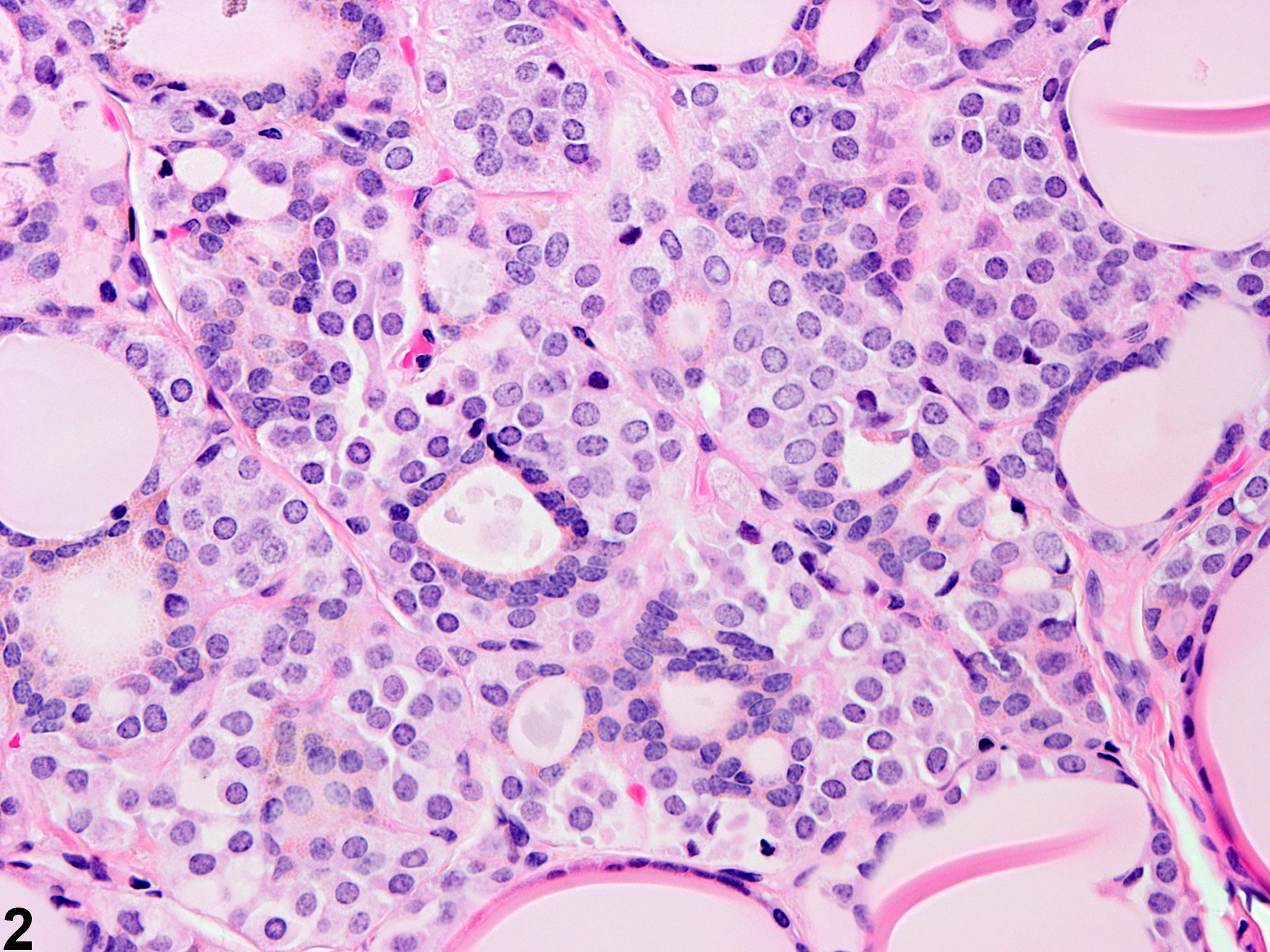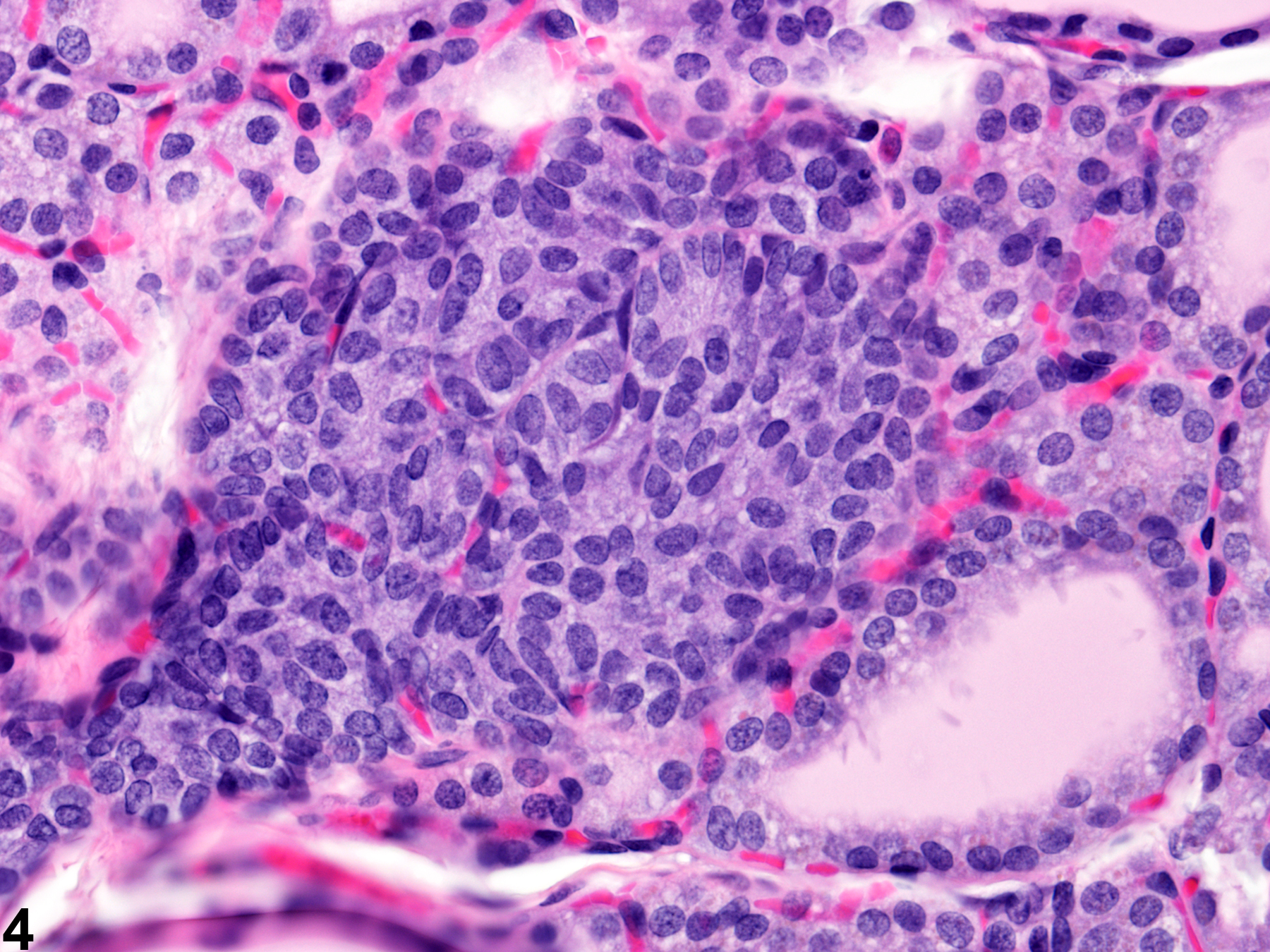Endocrine System
Thyroid Gland - C Cell Hyperplasia
Narrative
Capen CC, DeLellis RA, Yarrington JT. 2002. Endocrine system. In: Handbook of Toxicologic Pathology, Vol 2 (Haschek WM, Rousseaux CG, Wallig MA, eds). Academic Press, New York, 681–783.
Abstract: http://www.sciencedirect.com/science/book/9780123302151Capen CC, Martin SL. 1989. The effects of xenobiotics on the structure and function of thyroid follicular and C-cells. Toxicol Pathol 17:266-293.
Abstract: http://www.ncbi.nlm.nih.gov/pubmed/2675279Chandra S, Hoenerhoff MJ, Peterson R. 2013. Endocrine glands. In: Toxicologic Pathology: Nonclinical Safety Assessment (Sahota PS, Popp JA, Hardisty JF, Gopinath G, eds). CRC Press, Boca Raton, FL, 655-716.
Abstract: http://www.crcpress.com/product/isbn/9781439872109Collins WT, Capen CC, Kasza L, Carter C, Dailey RE. 1977. Effect of polychlorinated biphenyl (PCB) on the thyroid gland of rats. Ultrastructural and biochemical investigations. Am J Pathol 89:119-136.
Abstract: http://www.ncbi.nlm.nih.gov/pubmed/199066Greaves P. 2007. Histopathology of Preclinical Toxicity Studies: Interpretation and Relevance in Drug Safety Evaluation, 3rd ed. Academic Press, Amsterdam, 819-839.
Abstract: http://www.sciencedirect.com/science/book/9780444527714Hardisty JF, Boorman GA. 1990. Thyroid gland. In: Pathology of the Fischer Rat: Reference and Atlas (Boorman GA, Eustis SL, Elwell MR, Montgomery CA, MacKenzie WF, eds). Academic Press, San Diego, 519–536.
Abstract: http://www.ncbi.nlm.nih.gov/nlmcatalog/9002563
Thyroid gland, C cell - Hyperplasia in a treated female F344 rat from a chronic study. Aggregates and small nests of C cells have replaced follicles in this thyroid gland.





